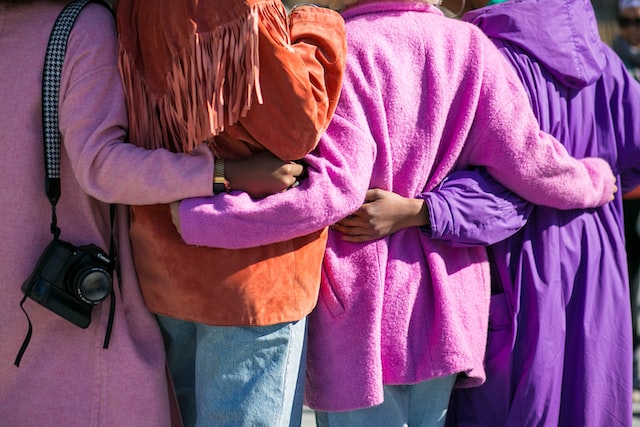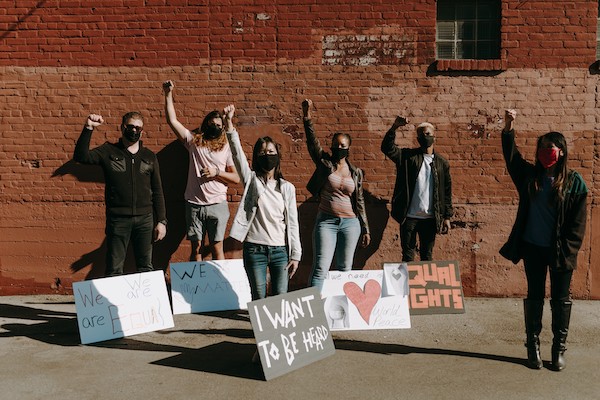A pilot survey revealed that women suffer psychological violence and sexual harassment in their campuses in LAC

Taking note of the lack of existing data and guidance related to the problem of violence against women (VAW) in higher education institutions (HEI), UNESCO IESALC developed a pilot questionnaire to understand better whether and how women experience violence in these institutions in Latin America and the Caribbean region, and the availability of institutional mechanisms to address this issue.
More than half (53%) of the respondents revealed that they have experienced some kind of psychological or emotional violence in HEI. A similar percentage perceives hostility from professors or colleagues toward women, and 46% reported having heard people in their institutions insulting, ridiculing, or mocking women in general.
When they were asked whether they believed that their institution would protect them if they reported psychological/emotional violence, 50% disagreed and strongly disagreed with the statement.
In contrast to psychological/emotional violence, direct exposure to physical violence was reported with significantly lower rates, at 1,5%. However, the fact that 11% of respondents confirmed having witnessed other women being hit or held firmly against their will on campus, may point to an underestimation.
Furthermore, it can be already assumed that most institutions lacked clear strategies or mechanisms to protect women from violence in higher education: almost half of respondents (48%) said they would not know whom to contact in their institutions if they were physically attacked.
In terms of feelings and perceptions, 37% women reported not feeling safe around their male classmates/colleagues, while 18% said they think that physical violence against them or other women was previously justified/condoned in their institutions. Finally, when asked whether physical violence was preceded by psychological violence, most women (51%) agreed and strongly agreed.
Respondents were also asked about their own experiences in terms of sexual harassment at their universities. Here, the pooled estimates revealed that conducts of verbal nature were the most reported experiences by respondents, including being told insulting or rude comments toward women in general (45%), sexual jokes (37%), and sex-related comments about their physical appearance (36%).
On the other hand, conducts of physical nature were reported with lower rates: 36 out of 131 reported unnecessary physical contact, including unwanted touching, while 9 women out of 131 said having been asked for sex in exchange for a benefit or favour.
At risk
When respondents were asked why some women in their institutions were at increased risk of sexual violence, issues related to poor capacity to respond as well as the existence of gender roles and stereotypes prevailed. Respectively, the lack of knowledge on how to report sexual violence and the lack of sanctions to perpetrators, the prevalence of hyper-masculine behaviours and of societal norms that reinforce women stereotypes were cited at the highest rates.
When asked about what contributed to the risk of VAW in their institutions, most respondents mentioned the low levels of prevention: in particular, 71% strongly agreed and agreed that the lack of acknowledgement of all types of violence was one of the main risk factors, followed by the lack of staff training (66%) and of gender sensitization events/programs (65%).
Many respondents agreed and strongly agreed that the absence of an effective response system in their institutions negatively influenced women’s safeness, pointing out to poor reporting mechanisms (63%) and the absence of a university policy to respond to VAW (57%).
Gender inequality and unequal gender relations were also considered root causes of violence against women in the context of their institutions: for example, 66% strongly agreed and agreed that male leaders were not interested in addressing violence against women, while also reporting at high rates the lack of women representation in decision making (58%).
The survey further sought to collect respondents’ opinions on the actions needed to increase women’s safety in higher education institutions by presenting a list of relevant strategies, which were all fully welcomed by respondents. Specifically, women recognized the importance to establish clear interventions for both response and prevention: among the highest rates, 104 out of 131 reported the need to establish clear sanctions for students and staff that commit different types of violence, while 96 called for the creation of a dedicated body/committee to research, monitor, and evaluate institutional responses to the issue.
Equally, 94 out of 131 women believed that developing an advocacy and communication strategy to educate women and encourage them to report would be one of the most appropriate strategies.
Main findings
Despite the small sample of the questionnaire, results yielded critical insights on VAW in the context of higher education institutions. In particular, the survey revealed the following points:
- Psychological/emotional violence was the form of VAW that, among respondents, was experienced at the highest rates.
- Physical violence was reported at lower rates, however, signs of possible underestimation emerged.
- Sexual Harassment was reported at significant rates, especially in terms of conducts of verbal and non-physical nature.
- The lack of prevention and response mechanisms to address violence against women in the respondents’ institutions was highlighted, noting with particular concern the lack of reporting mechanisms and of general awareness and knowledge of all types of VAW.
- Respondents fully recognized the urgency to establish various prevention and response strategies against VAW in higher education institutions.

RELATED ITEMS








